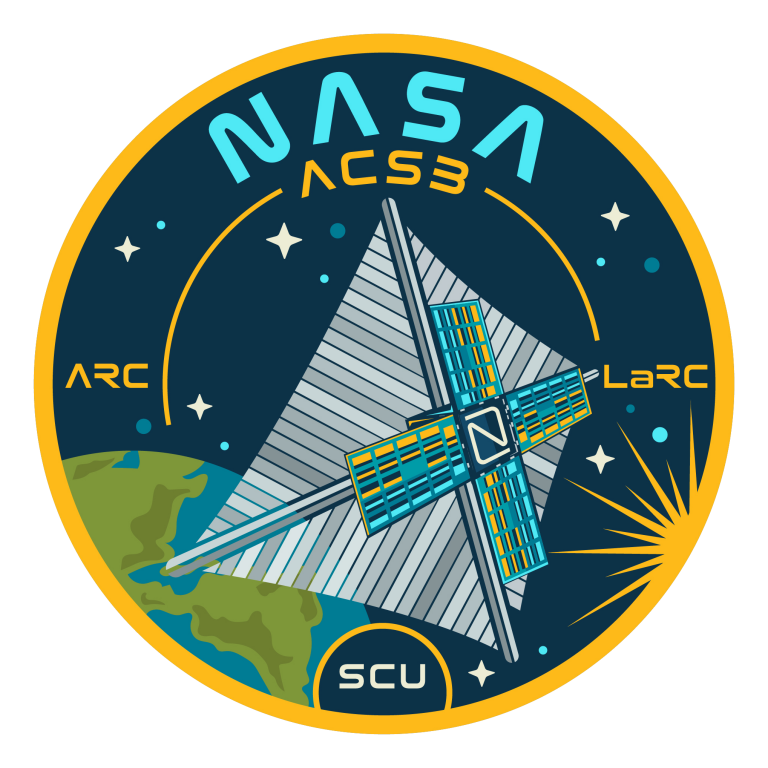NASA's New Solar Sail Is Unlike Any Other

NASA and nanosatellite makers NanoAvionics are teaming up to test a new type of solar sailing technology.
The nanosatellite will be equipped with an 800-square-foot sail and four 21-foot-long retractable composite booms.
Solar sailing, a method of propellant-free propulsion, started as a science fiction concept and is quickly carving out space in the future of spaceflight.
NASA has teamed up with NanoAvionics to test out a new type of solar sail system. NASA's Ames Research Center in Silicon Valley will run the mission, called Advanced Composite Solar Sail System (ACS3). If it successfully deploys in low Earth orbit, the uber-light composite boom solar sail could pave the way for larger solar sail missions down the road.
Solar sailing, a term first coined by science fiction writer Arthur C. Clarke in his 1964 short story "Sunjammer," is a method of powering small spacecraft without the use of an expensive propellant. Instead, the spacecraft has a large, mirror-like sail, which harnesses the power of the sun.
But unlike solar panels, which absorb solar energy and generate power, solar sails are powered by the momentum produced by photons as they bounce off the reflective sail. This flow of photons continuously builds thrust, reliably powering spacecraft for long distances through the frictionless vacuum of space. (They switch directions by tacking just like a sail boat.)
NanoAvionics will design and build the 12U bus nanosatellite at its Columbia, Illinois facility and pass it off to Ames for the final integration and operations, according to a company press release. NASA's Langley Research Center in Hampton, Virginia is also participating in the project.

The sail and boom will fit inside NanoAvionics's 12U bus, which is about the size of a shoebox and weighs approximately 10 pounds. Once it reaches low Earth orbit, it'll take the aluminum-coated plastic sails, which will ultimately stretch up to 800 square feet, between 20 and 30 minutes to unfurl. For the bulk of the mission, it'll zip along Earth's orbital plane to minimize drag.
NASA is specifically testing the new tape-spool extraction system, which pulls the sails and 21-foot-long collapsible composite booms from the bus. ACS3 will have a suite of cameras ready to capture the unveiling from every angle so engineers can track its progress and make note of any anomalies as it unfolds. At the end of the five-month-long mission, the agency will shift the satellite into a position that maximizes aerodynamic drag and move to de-orbit.
Though it started as a sci-fi concept, in recent years, solar sailing has become an important fixture in conversations about the future of spaceflight. Solar sail-powered spacecraft could one day propel deep space missions to the outskirts of the solar system or power polar-orbiting solar or planetary missions.
ACS3 is designed to be a technological proving ground for a much larger 5382-square-foot solar sail, which NASA intends to send out into the solar system in the coming years. (It's not the agency's first attempt. Remember Sunjammer?) There's even talk that these solar sail-powered spacecraft could act as a communications relay, ferrying data between Earth and future human missions.
Solar sails are well designed for comet flybys and asteroid mining, too. NASA's Near Earth Asteroid (NEA) mission, Scout—a JPL/Marshall Space Flight Center collaboration that will be part of the payload on Artemis 1—will pop off of the Orion spacecraft and zip into the solar system to collect data about potentially hazardous and potentially mineable asteroids.
Japan's IKAROS satellite, which launched in 2010, was the first solar sail system to control its orbit using the technology. NASA's NanoSail-D2 launched the same year. The Planetary Society sent the crowd-funded LightSail 2 cubesat into space in July 2019, where it successfully unfurled its reflective sail. (A 2015 test mission by the Planetary Society was deemed a success after a bumpy launch and communication losses.) You can track its journey in Earth's orbit here.
There's no word yet on when ACS3 will join the other solar sailers in orbit, but we'll be keeping a weather eye on the spacecraft when it does launch.
You Might Also Like

 Yahoo News
Yahoo News 
